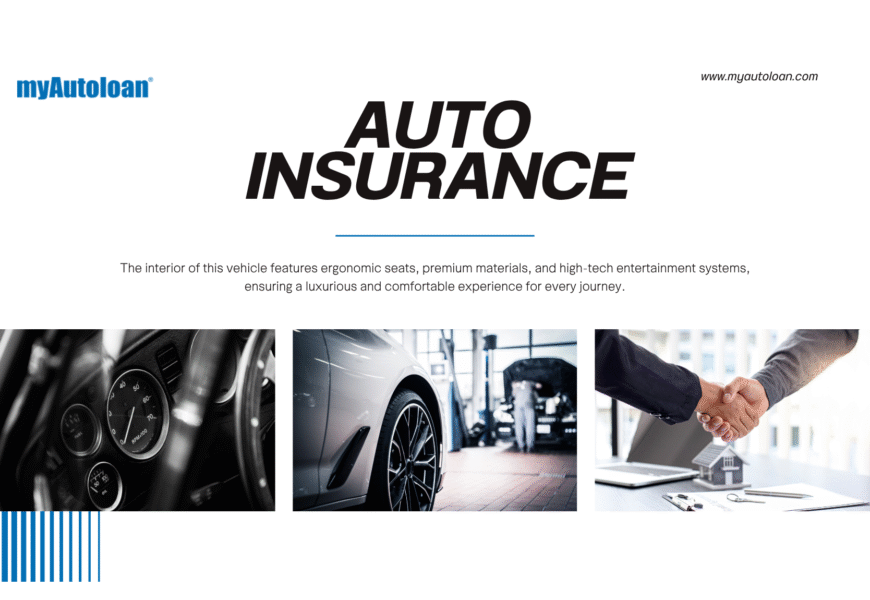Buying a car is exciting, but let’s face it — navigating the world of auto loans? Not so much. If you’re planning to finance your ride, getting the best deal is crucial. Here’s your no-nonsense, step-by-step checklist to make sure you’re ready, informed, and primed to get the best auto loan out there.
1. Know Your Credit Score
Before you even look at cars, check your credit score. This is the number one thing lenders will consider when determining your loan terms. A higher score usually means better interest rates and loan conditions. If your score is low, it might be worth taking the time to improve it, or at least be prepared to face higher rates.
- Tip: Aim for 700 or above if you want to qualify for the best rates. Below 600? Prepare for some pain in the interest rate department.
2. Set Your Budget
You’re not buying a car if you can’t afford it, so take the time to calculate how much you can comfortably spend. Auto loan calculators are your friend here. Consider your monthly income and expenses, and make sure you don’t max out your budget. A common rule of thumb: don’t spend more than 20% of your monthly income on car expenses (loan payment, insurance, etc.).
- Tip: Factor in insurance and taxes. They can be way higher than you think, especially on pricier cars.
3. Research Lenders
Not all loans are created equal. Banks, credit unions, and online lenders all offer different rates. Shop around and compare offers before you even get to the dealership. You don’t want to get locked into a loan with bad terms because you didn’t do your homework.
- Tip: Credit unions often offer lower interest rates, especially if you’re already a member. Don’t ignore them.
4. Consider Loan Terms
When it comes to loan terms, longer isn’t always better. Sure, a 72-month loan might look appealing because your payments are lower, but you’ll pay way more in interest over time. A shorter loan (36–48 months) means higher payments, but it’ll save you money in the long run.
- Tip: Try to keep the loan term under 60 months if possible. Anything longer and you might end up owing more than the car is worth.
5. Down Payment
Put as much down as you can to reduce your loan amount. The larger your down payment, the less you’ll need to borrow. Plus, putting more down can help you secure better loan terms, as you’ll appear less risky to lenders.
- Tip: Aim for at least 20% down, especially if you’re buying a new car.
6. Pre-Approval
Get pre-approved for an auto loan before you even step foot on a car lot. It’s like having a VIP pass to better deals. When you’re pre-approved, you know your loan amount, interest rate, and terms. It puts you in the driver’s seat (pun intended) and helps avoid any surprises later.
- Tip: Pre-approval doesn’t guarantee you the best deal, but it does give you leverage when negotiating with the dealership.
7. Understand the Fees
Interest is just the beginning. Be sure to ask about fees — origination fees, late payment penalties, and prepayment penalties (some loans charge if you pay off the loan early). These can add up quickly and catch you off guard.
- Tip: Always ask about fees upfront, and don’t be afraid to walk away if the loan terms are sketchy.
8. Know the APR (Annual Percentage Rate)
Interest rates are important, but APR is the full picture. APR includes the interest rate plus any fees, and it tells you how much the loan will cost you overall. A low-interest rate may seem tempting, but a higher APR could mean more money out of your pocket in the long run.
- Tip: The APR is what you want to focus on more than the interest rate. It’s the true cost of borrowing.
9. Dealership Financing vs. Bank/Online Loans
Dealership financing can be convenient, but don’t just sign without checking other options. Sometimes dealerships offer great rates or manufacturer promotions, but other times, you could get a better deal elsewhere. If you’re getting financing through the dealership, be sure to compare it with the rates you’ve already been pre-approved for.
- Tip: If you find a better rate elsewhere, tell the dealership. They might be willing to beat it to keep your business.
10. Read the Fine Print
Before signing anything, read every part of the contract. Look for hidden fees, restrictions, and any terms that don’t sit right with you. It’s all about being thorough. If something doesn’t make sense, ask questions or walk away.
- Tip: Don’t rush. A good deal isn’t worth it if you’re signing up for something that doesn’t work for you.
11. Finalize the Loan
Once you’ve picked a lender and a car, you’ll finalize the loan terms. You’ll need to provide proof of income, insurance, and possibly other documents like proof of residence or your Social Security number. This is when your lender will run a hard credit check, so be prepared for a potential small dip in your credit score.
- Tip: Make sure your paperwork is in order to avoid any delays or issues with finalizing the loan.
Final Thoughts
Buying a car isn’t just about picking a cool ride. It’s about making sure you don’t get trapped in a financial mess. By following this checklist, you’ll set yourself up for success. Do your research, know your numbers, and negotiate like a pro. The road to your new car doesn’t have to be bumpy — just steer clear of bad loans and make sure you’re getting the best deal possible.
You’ve got this! Now, go get your dream car — but make sure it’s the right financial fit.












